With at least 6 hours of full sunlight each day, you can expect berries to produce flavorful fruits with rich colors and tastes. Like many fruit plants, the exposure of berries to sufficient sunlight helps increase the quality of their produce.
If your garden is not exposed to maximum sunlight, you may be bothered about growing berries in it.
But the good news is, there are a couple of shade-loving berries that will grow just fine in a shady or partial sunlight garden. So, your garden’s exposure is not a total limitation for your plans to plant berries.
In this article, we discuss 11 berries that grow in the shade. We talk about the ease of growing them, the best seasons for planting them, and much more.
1. Barberry
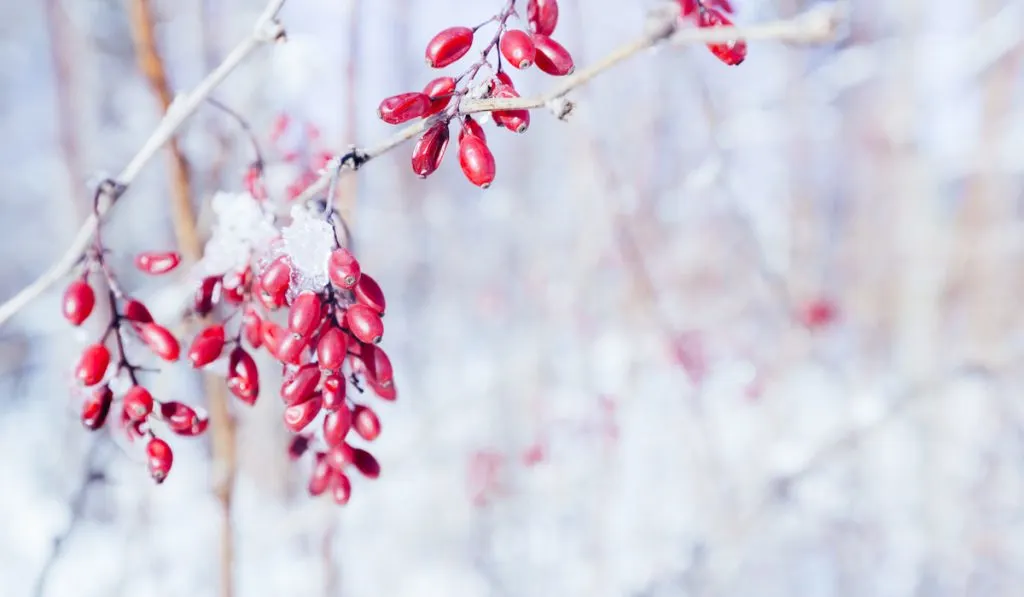
Barberries prefer full sunlight, but they do well in the shade too. They are a low-maintenance group of shrubs that offer ornamentation and serve as food.
Barberries grow into colorful plants that can raise the appearance of your garden year-round. That aside, their slightly sweet, tart fruits can be eaten raw. You may also use the fruits in making salads, preparing jam, and much more.
These berries are pretty low maintenance, the most work you may have to do when planting barberries is prune them.
There are more than 400 barberry species, and most of them grow sharp thorns. So, if you have little kids around, you may want to opt for the thornless species.
You can grow barberries in various soil types; all you need to ensure is that the soil drains well. You can even plant barberries in containers.
The best time to plant barberries seeds is fall. The cold promotes their germination, and by early to mid-spring, they should have started sprouting.
If you choose to plant your barberry at any other time in the year, you may have to place the seeds in a fridge for 8 weeks before planting.
2. Blackcurrant
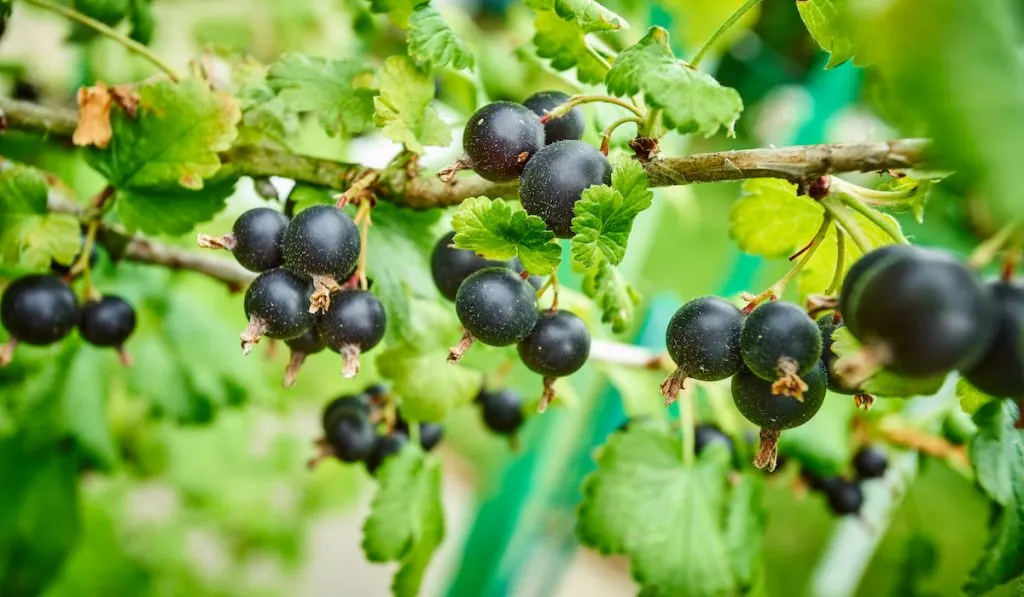
Blackcurrants are pretty easy to grow, and like barberries, they are low-maintenance. Blackcurrants do well in light shade, especially the Ben Connan and Ben Hope varieties.
If you live in a warm region, your blackcurrant plants will actually benefit immensely from the shade, especially in the afternoon. The shade will protect the plants from the elevated temperatures that come with afternoons.
You can grow blackcurrants in the ground in containers. They do best in well-draining acidic soils with sufficient organic matter.
Blackcurrants are best planted in late fall and harvested in late summer. Of course, if you intend to grow yours in a pot, you can sow the seeds at any time of the year.
Blackcurrant fruits are pretty tasty, and they are a decent source of vitamin C.
3. Crowberry

Crowberries are native to cool regions. So, it is no surprise that they tolerate full shade well.
Crowberries are edible, and they produce juicy fruits with a sour, acidic taste. They have an intense flavor, so you will enjoy them better when you dry them or cook them.
Besides being used for culinary purposes, crowberry plants are also ornamental. They produce small purplish-pink flowers and colorful fruits. Berries from a crowberry plant can be black, red, or purple, depending on the species.
Crowberry plants can be grown with cuttings or seeds. When cultivating them with seeds, cold stratification promotes faster germination. On the other hand, warmth delays germination.
When growing crowberries with seeds, it may take 3-5 months for germination. But with cuttings, it takes just around 3 weeks.
Crowberries can be planted in spring, summer, or winter. They thrive best in moist, acidic soil. Crowberries can be grown in containers before being transferred into the ground. But they cannot be kept as a houseplant.
4. Elderberry
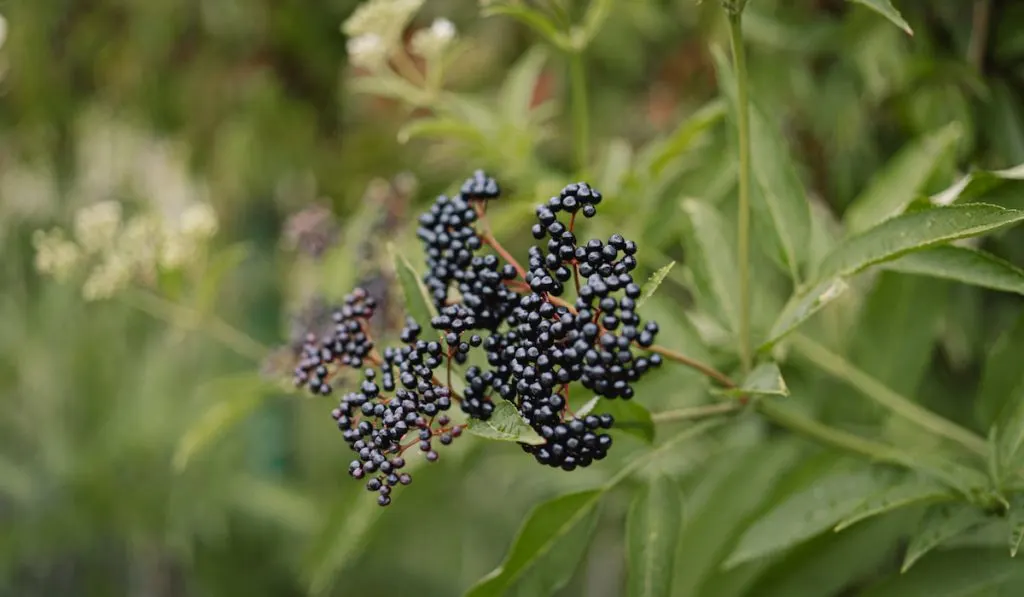
Elderberries thrive in the shade, especially the Adams and Laciniata varieties. But if you want them sweeter, expose them to sunlight. Elderberry fruits are juicy, and you can eat them when they are ripe. They are even better when cooked before consumption – if you consume them raw, you may become nauseated.
Besides eating them, elderberries may also be used for their medicinal properties. They also have pretty flowers and berries. So, you can use them for decorative purposes.
Elderberry does best planted in spring after the last frost date. It is better to sow them in the morning or evening to avoid the most intense heat of the day.
Elderberry bushes are best grown in well-draining acidic soil. Mulch also promotes their sustenance.
5. Gooseberry
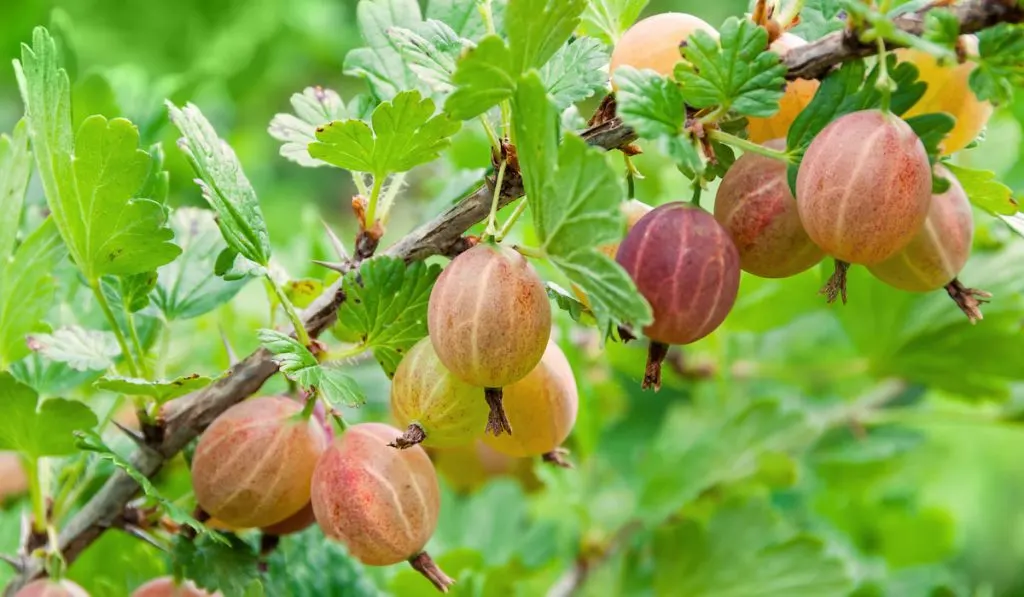
Like blackcurrants and most other currants, gooseberries thrive in the shade, especially the Greenfinch and Invicta varieties. In fact, full sunlight may scald them. So, homesteaders typically grow them in the dappled shade offered by fruit trees.
Gooseberries have a sweet-tart taste that is very likable. The fruits may get even sweeter when exposed to more sun than shade.
Gooseberries are low-maintenance. Once established, they can keep producing berries for more than 10 years.
Gooseberries are best planted in spring or autumn. They survive in various soil types and should be mulched over winter. While many soil types are suitable for gooseberries, ensure you choose a well-draining soil enriched with compost.
6. Honeyberry
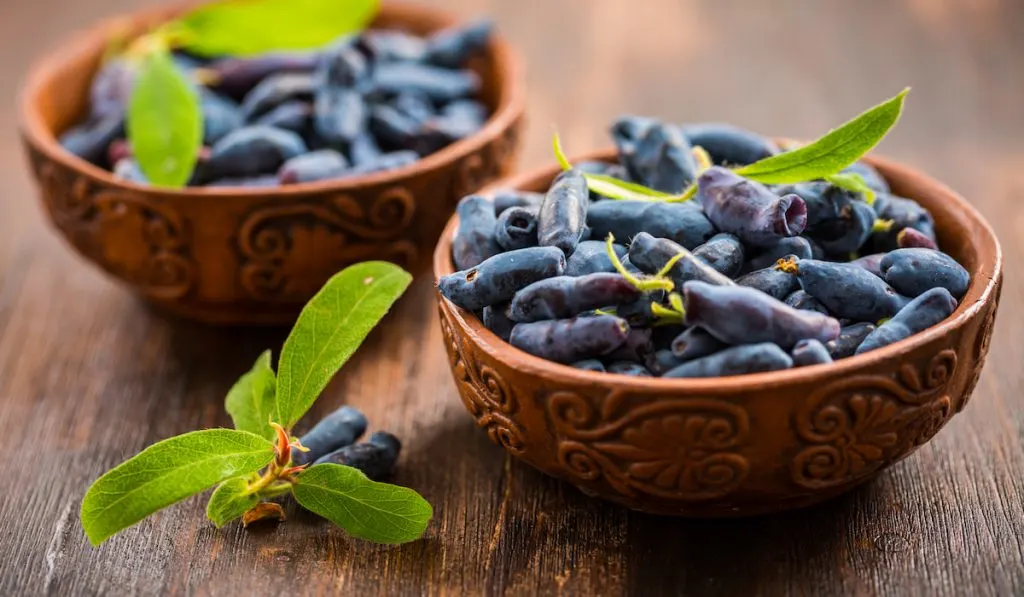
Honeyberries do well in partial shade, but they are also okay in full sunlight. They are frost-tolerant and generally low-maintenance. Although, you may have to protect them from birds since birds love honeyberries.
Honeyberries are pretty similar to blueberries. They taste like blueberries, look like blueberries, and can be eaten like blueberries.
Honeyberries grow best in composted, well-drained neutral to acidic soil. They are best planted in spring and should be ready for harvest by mid-summer to mid-fall.
7. Huckleberry
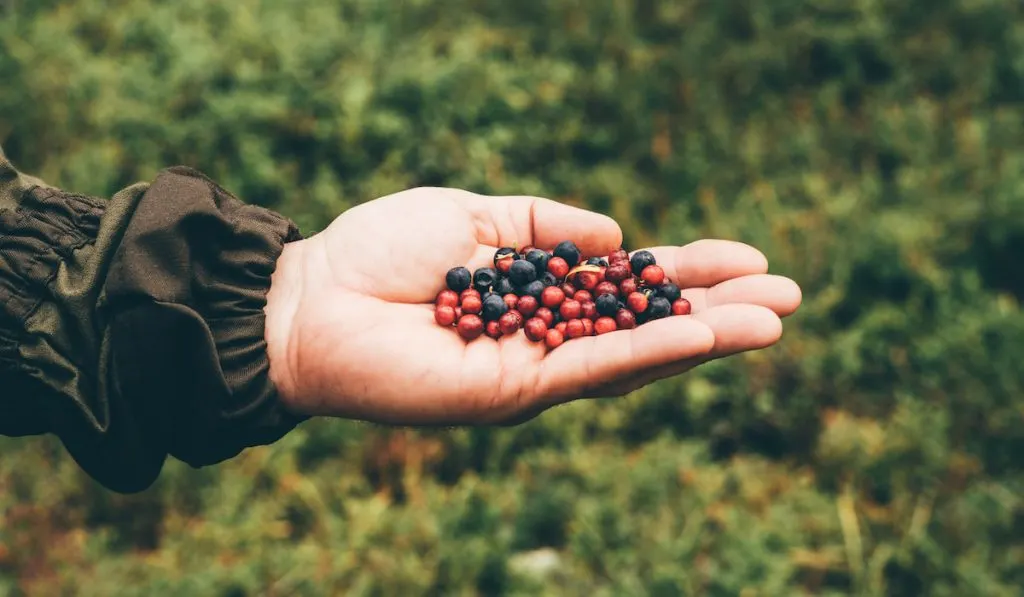
Huckleberries are wild berries that thrive in shade gardens – they survive full shade and do well in partial shade.
They produce pea-sized fruits that are just like blueberries. Berries from huckleberry plants even taste like blueberries. But since they are closely related, the similarities are not surprising.
There are many varieties of huckleberry across North America. If you intend to grow them, the local plant nurseries in your region should be able to offer you a species best suited for your area.
You may plant huckleberries in containers just before the last frost date. Then 1-2 years after planting it, you may transfer it into the ground. Huckleberries do best in loamy or sandy soil. They prefer well-drained, slightly acidic soil rich in organic matter.
8. Lingonberry
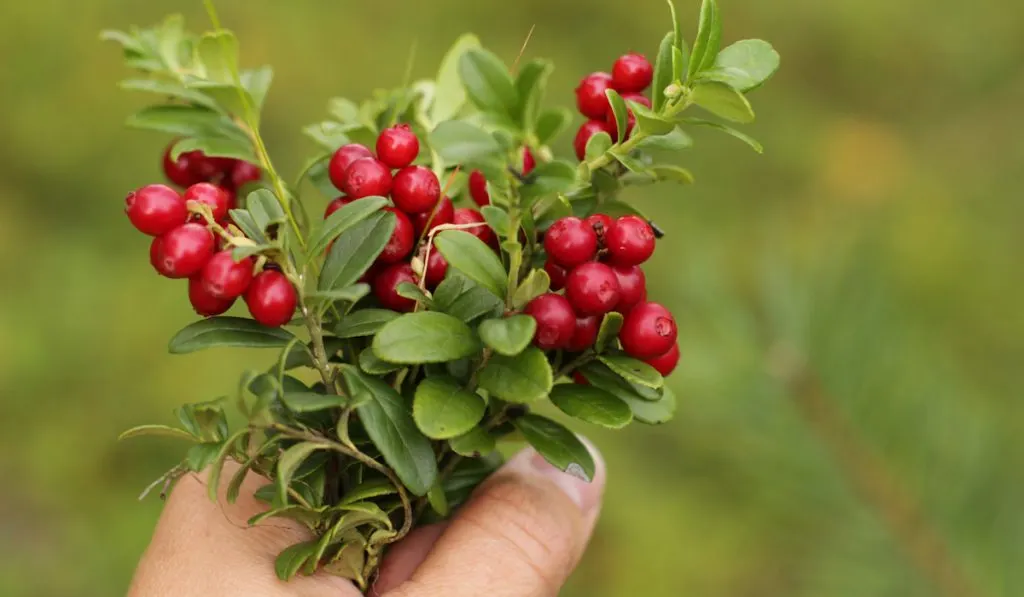
Lingonberries are native to temperate, Northern regions. So, it is no surprise that they do not really fancy high temperatures. Of course, Lingonberries do well in the shade, especially the Balsgard and Erntesegen varieties.
Lingonberries are best grown in spring after the last frost date. They thrive best in acidic soils, and since their roots sprawl, they need a lot of space for optimal growth.
9. Lowbush Blueberry
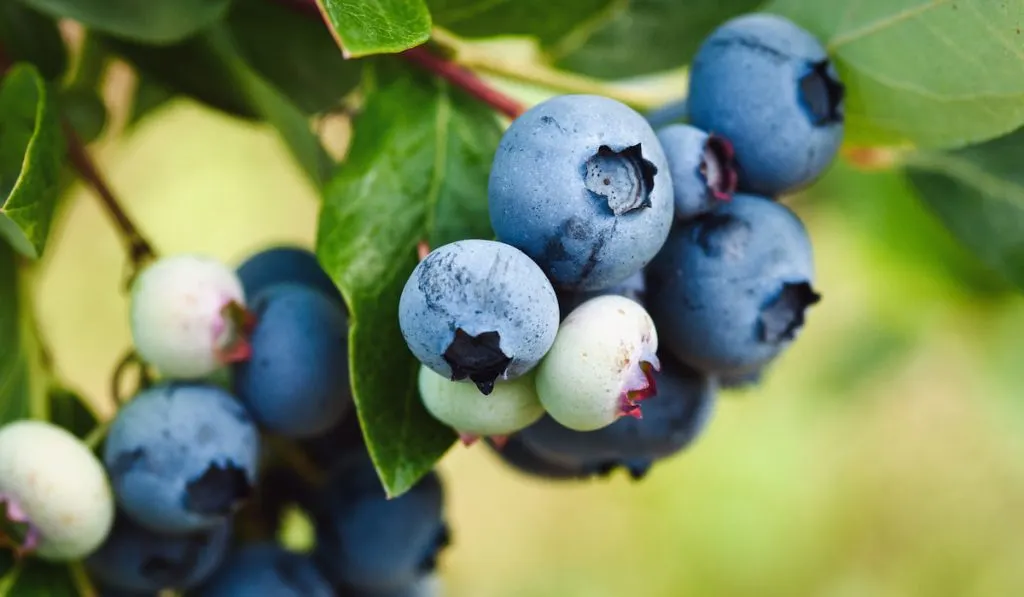
Lowbush Blueberries may also be called Wild Blueberries. They are a miniature version of Highbush Blueberries, which are more popular.
Lowbush Blueberries thrive in the wild. But they can also be grown in gardens. In the wild, they typically grow below forests and other vegetation. So, they are naturally tolerant to shade, especially the North Blue and Ruby Carpet varieties.
Lowbush Blueberries thrive best in acidic, loamy soils. They are even better poised when the soil is rich in organic materials. You can further improve the soil for your lowbush blueberries by adding coffee grounds every other week.
You may start your lowbush blueberries indoors in the colder seasons. Then when the buds show up in early spring, you may transplant them outdoors.
10. Redcurrant
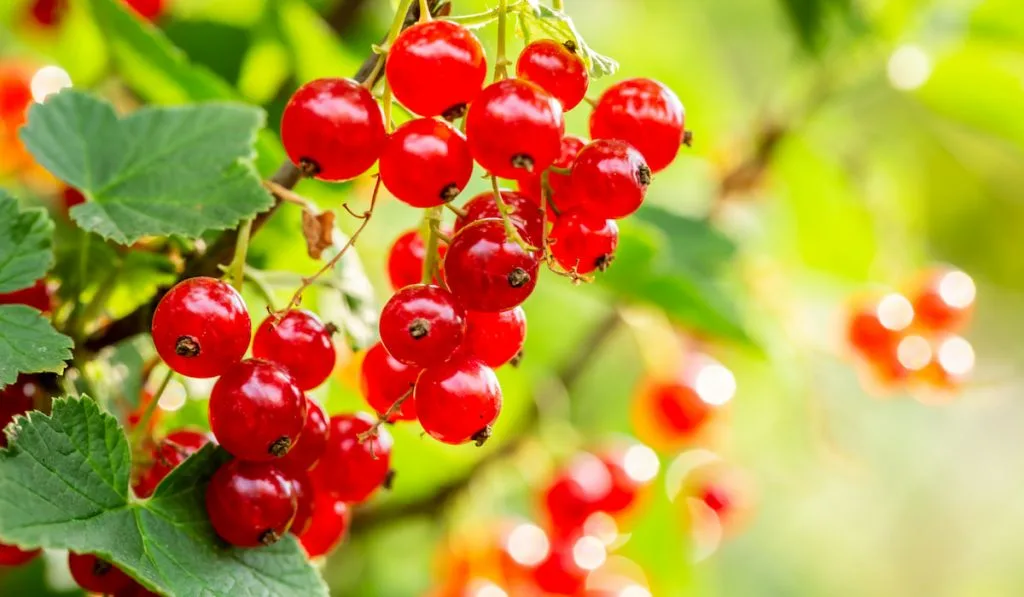
Like most currants, redcurrants tolerate shade or partial sunlight, especially the White Grape and Rovada varieties. In the wild, they grow in the shaded parts of the forest. So, their tolerance of the shade is not surprising.
Fruits from redcurrant plants are pretty tasty. But they are even sweeter when exposed to sunlight. Redcurrants can be eaten fresh, or they may be used in making jams and jellies.
You can plant bare-root redcurrants between mid-fall and early spring. But if you intend to start the plant in a container, you can plant them at any time.
Redcurrants will thrive in various types of soils as long as they are well-drained and moist.
11. White Currant
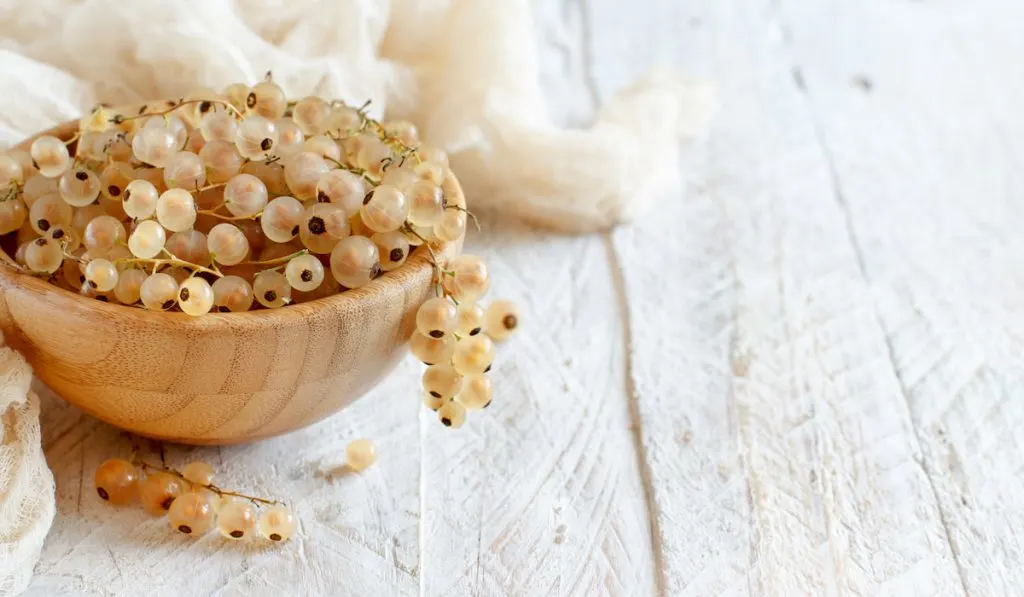
Compared to the other currants, white currants are milder and sweeter, so they can be eaten fresh. Interestingly, white currants are not as packed with nutrients as redcurrants and blackcurrants. But they still pack a lot of vitamin C.
White Currants are okay growing in shaded gardens; dappled shade or a combination of morning and afternoon shade is optimal for them.
White Currants are best grown in acidic soil enriched with compost. They are frost-tolerant but are best planted in spring.
When transferring white currants from your nursery outdoors, ensure you plant them in deeper holes.
Resources
- https://homeguides.sfgate.com/much-sun-fruit-trees-need
- https://www.healthline.com/nutrition/barberries
- https://www.gardeningknowhow.com/ornamental/shrubs/barberry/barberry-shrub-care-tips.htm
- https://gardenerspath.com/plants/ornamentals/grow-barberry/
- https://www.quickcrop.co.uk/learning/plant/blackcurrant
- https://www.wildfooduk.com/edible-wild-plants/crowberry
- https://depts.washington.edu/propplnt/Plants/Clintonia_uniflora.htm
- https://www.britannica.com/plant/Empetrum
- https://pfaf.org/user/plant.aspx?latinname=Empetrum+nigrum
- https://www.growplants.org/growing/crowberry
- https://www.cdc.gov/mmwr/preview/mmwrhtml
- https://plantaddicts.com/planting-elderberry
- https://www.rhs.org.uk/fruit/honeyberry/grow-your-own
- https://www.growveg.com/plants/us-and-canada/how-to-grow-honeyberry/
- https://www.diys.com/huckleberry-plant/
- https://www.thespruce.com/lowbush-blueberry-plant-profile
- https://www.rhs.org.uk/fruit/redcurrants/grow-your-own
- https://www.growveg.com/plants/us-and-canada/how-to-grow-white-currant/
- https://specialtyproduce.com/produce/White_Currant_Berries
